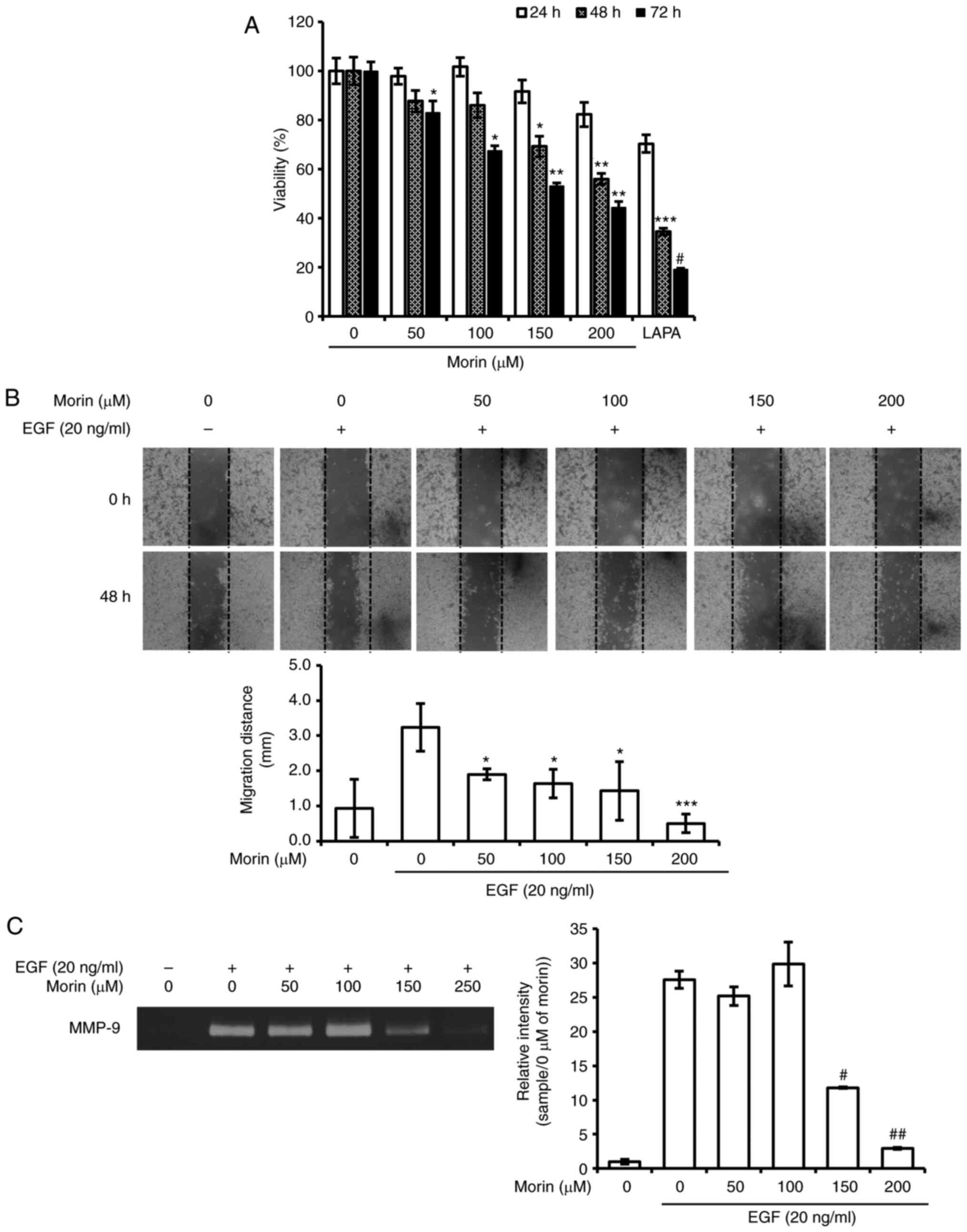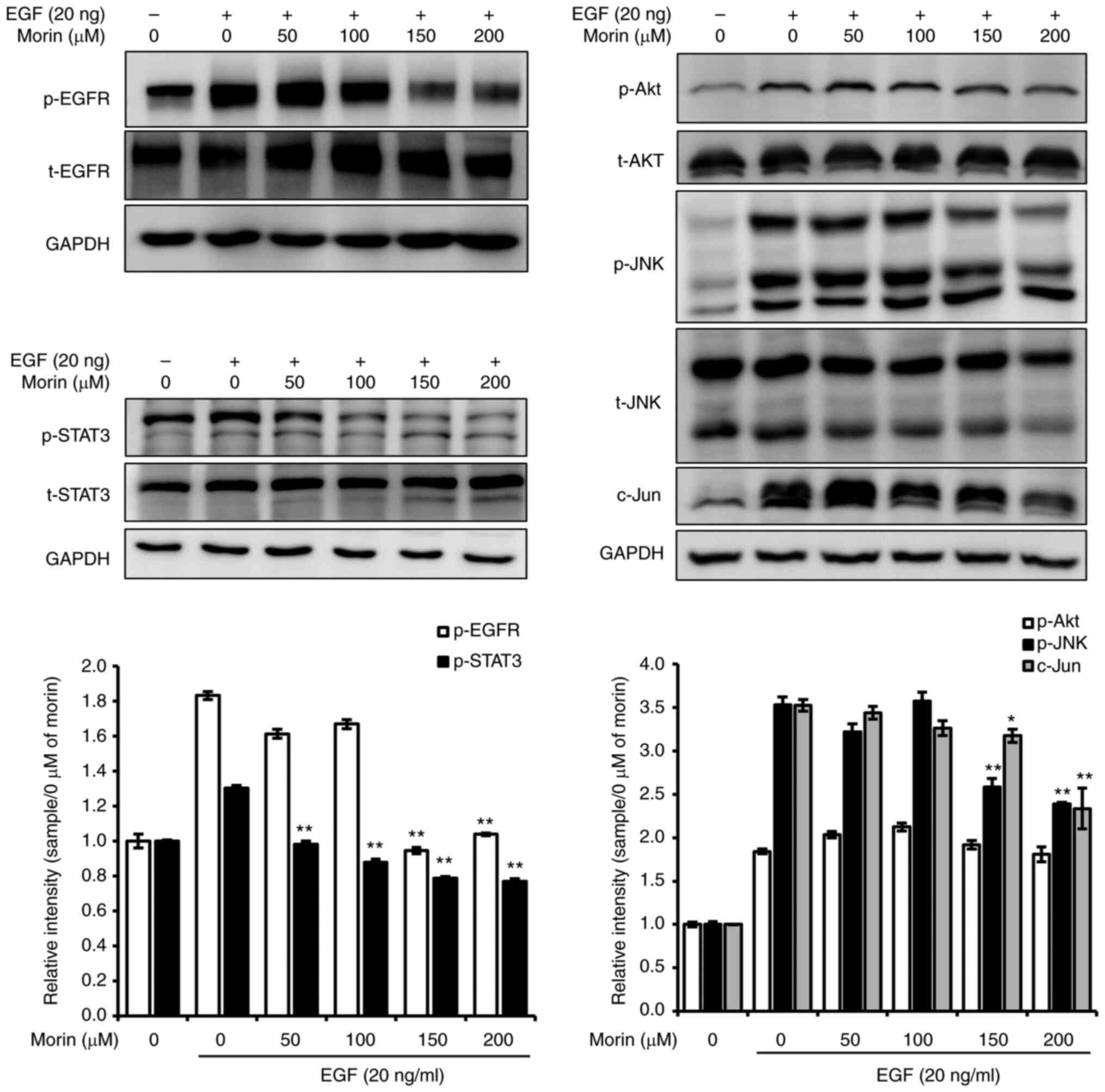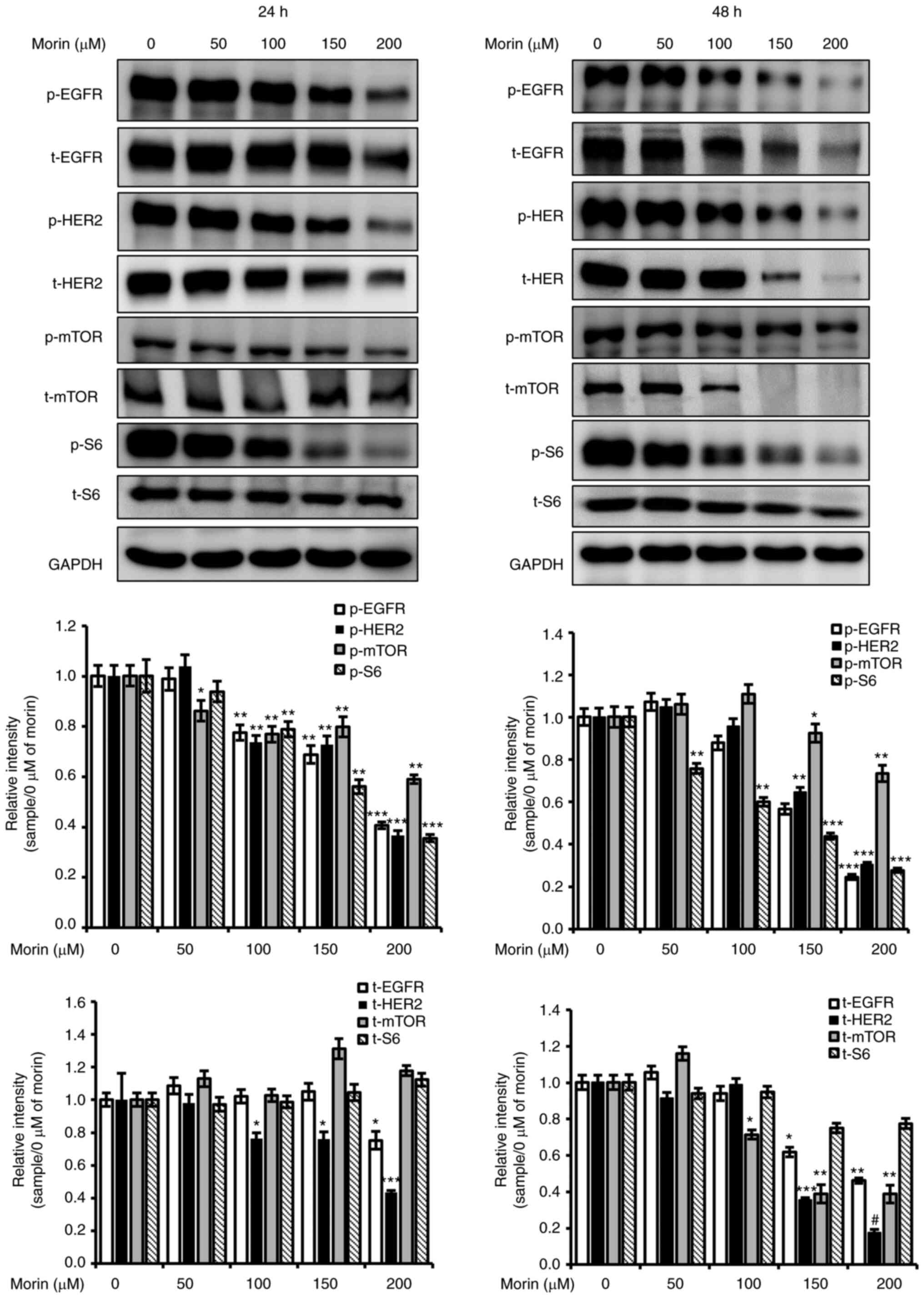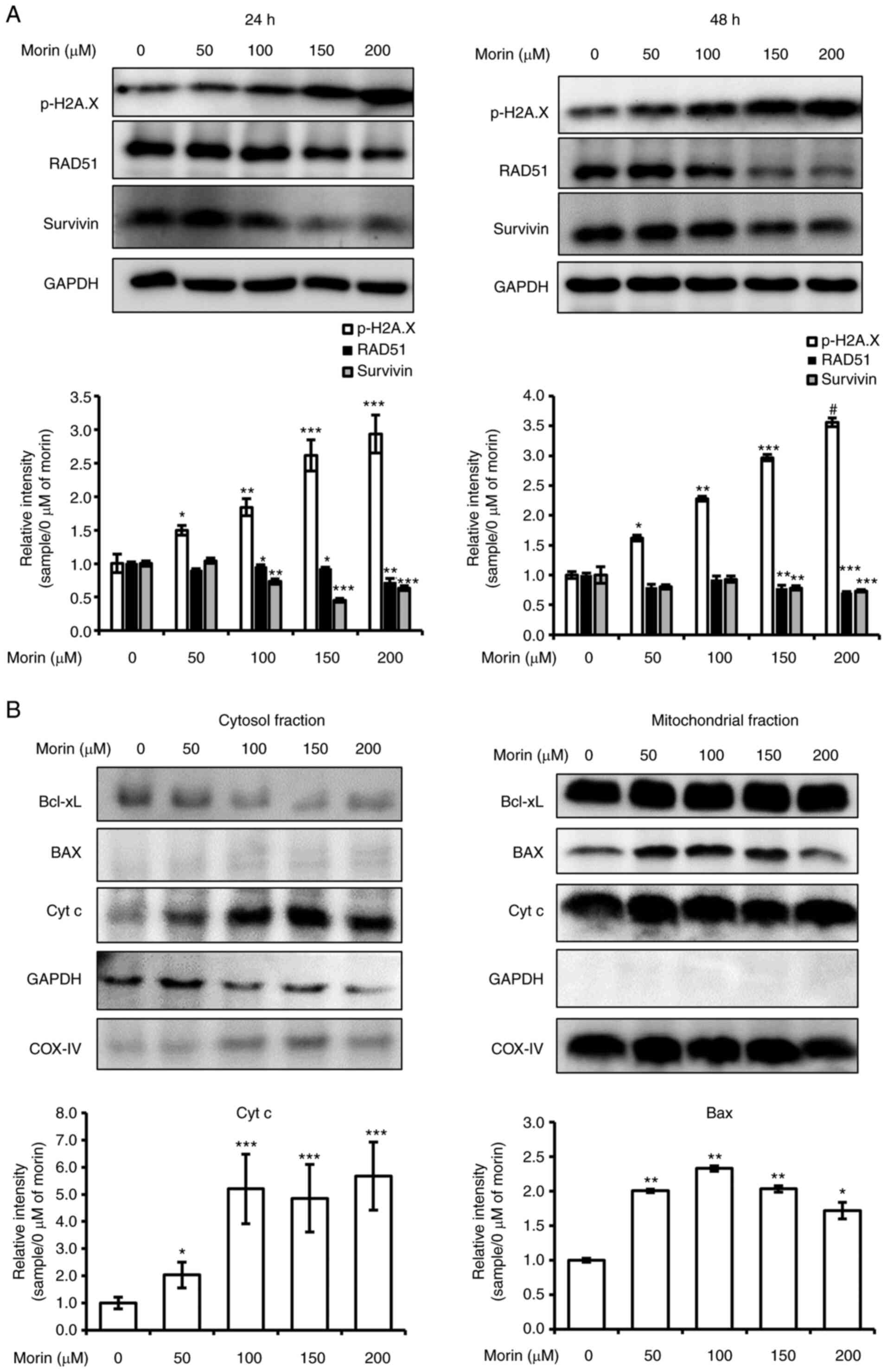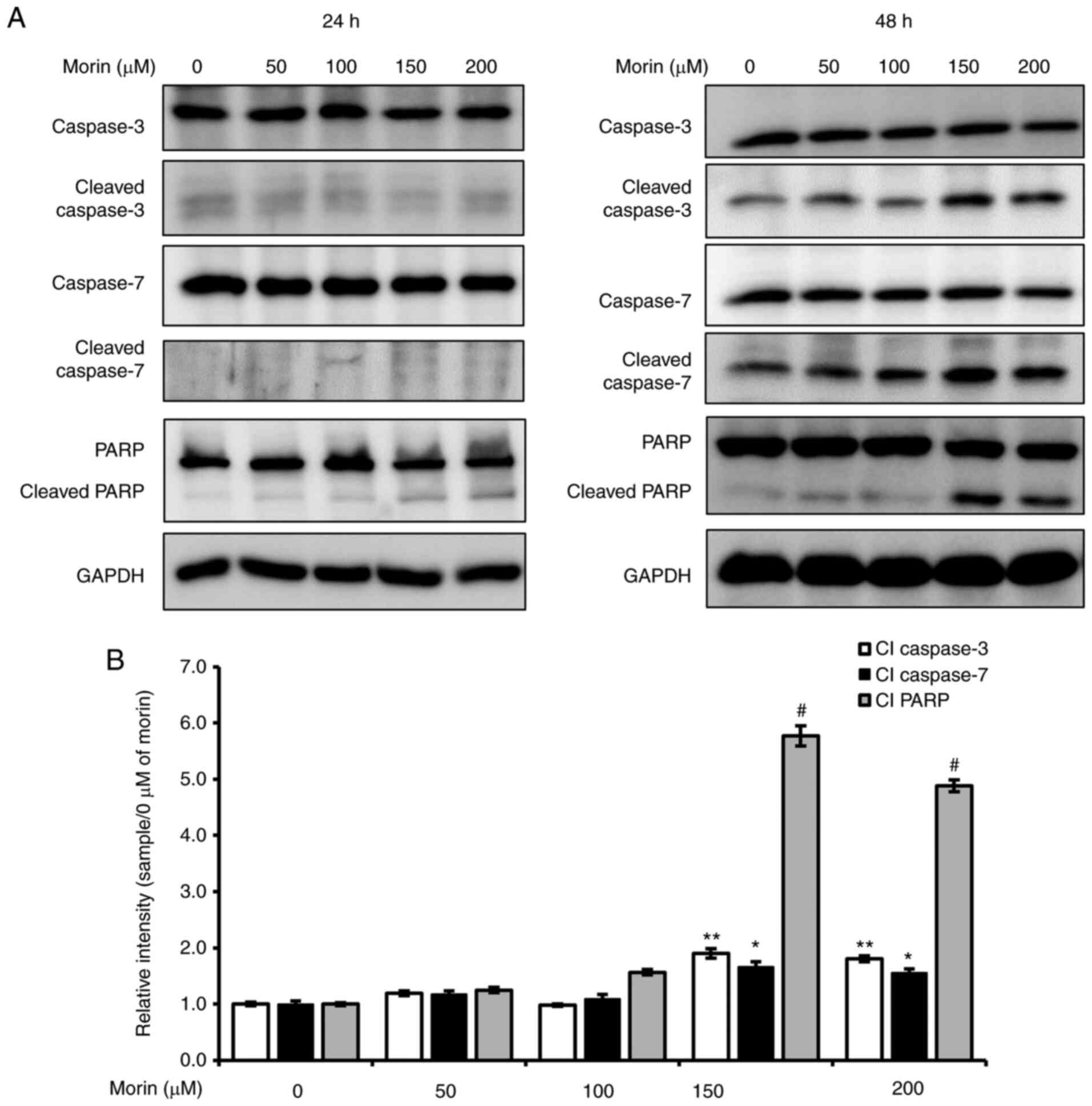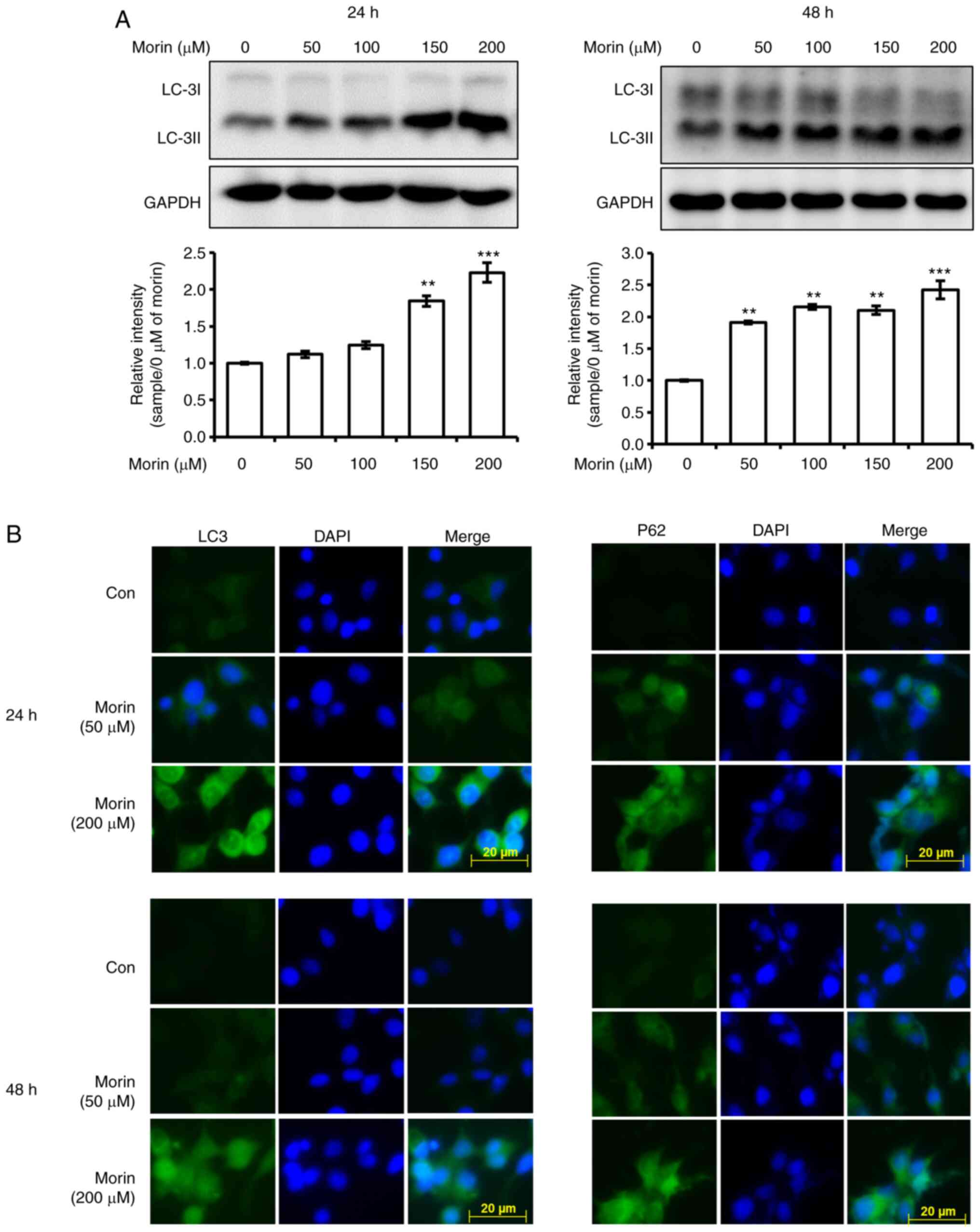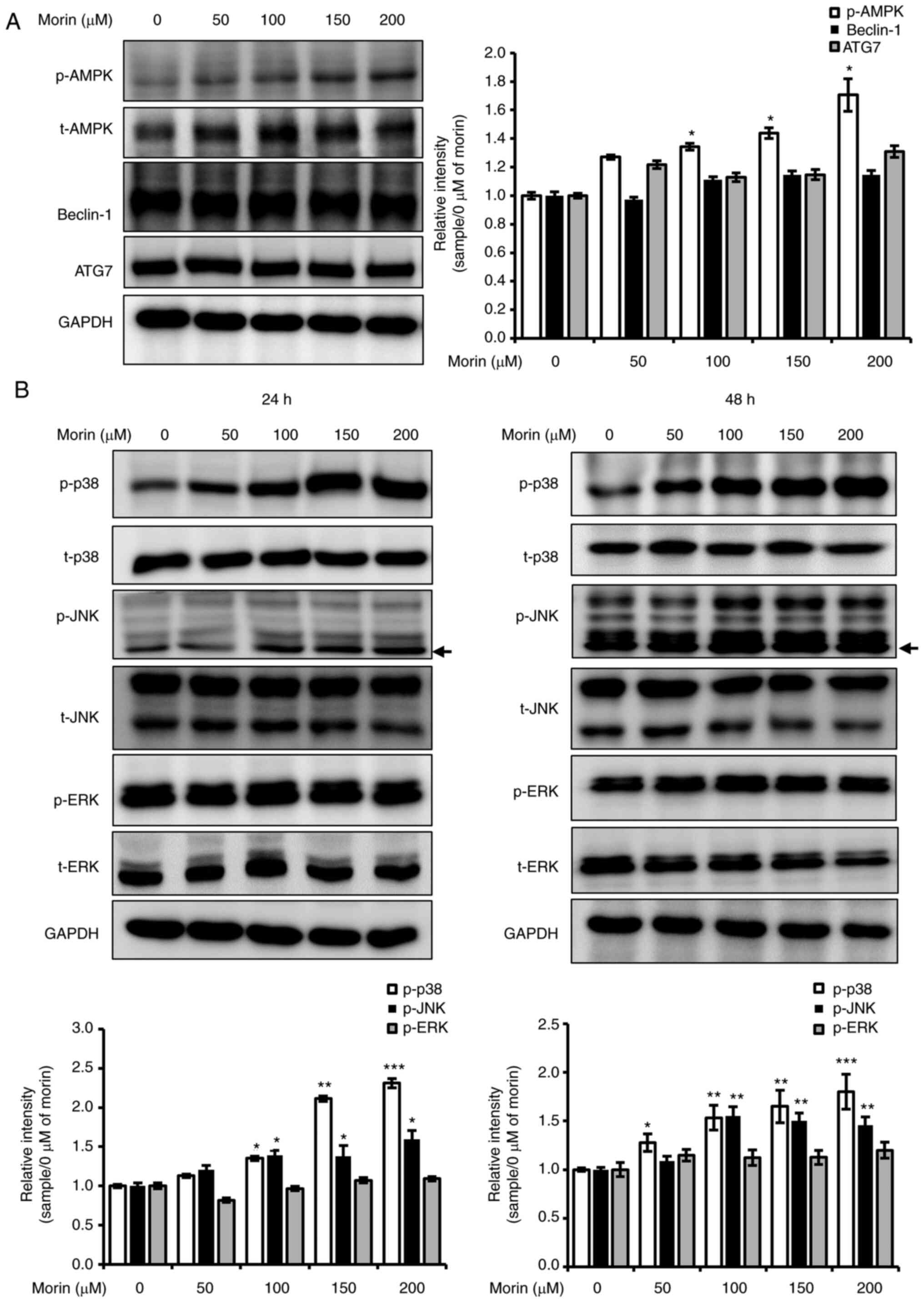|
1
|
Siegel RL, Miller KD and Jemal A: Cancer
statistics, 2016. CA Cancer J Clin. 66:7–30. 2016. View Article : Google Scholar : PubMed/NCBI
|
|
2
|
Waks AG and Winer EP: Breast cancer
treatment: A review. JAMA. 321:288–300. 2019. View Article : Google Scholar : PubMed/NCBI
|
|
3
|
Pernas S and Tolaney SM: HER2-positive
breast cancer: New therapeutic frontiers and overcoming resistance.
Ther Adv Med Oncol. 11:17588359198335192019. View Article : Google Scholar : PubMed/NCBI
|
|
4
|
Telli ML, Hunt SA, Carlson RW and Guardino
AE: Trastuzumab-related cardiotoxicity: Calling into question the
concept of reversibility. J Clin Oncol. 25:3525–3533. 2007.
View Article : Google Scholar : PubMed/NCBI
|
|
5
|
Eckstein N: Platinum resistance in breast
and ovarian cancer cell lines. J Exp Clin Cancer Res. 30:912011.
View Article : Google Scholar : PubMed/NCBI
|
|
6
|
Murray S, Briasoulis E, Linardou H,
Bafaloukos D and Papadimitriou C: Taxane resistance in breast
cancer: Mechanisms, predictive biomarkers and circumvention
strategies. Cancer Treat Rev. 38:890–903. 2012. View Article : Google Scholar : PubMed/NCBI
|
|
7
|
Ren W, Liu Y, Wan S, Fei C, Wang W, Chen
Y, Zhang Z, Wang T, Wang J, Zhou L, et al: BMP9 inhibits
proliferation and metastasis of HER2-positive SK-BR-3 breast cancer
cells through ERK1/2 and PI3K/AKT pathways. PLoS One. 9:e968162014.
View Article : Google Scholar : PubMed/NCBI
|
|
8
|
Lee KS, Shin JS and Nam KS: Starfish
polysaccharides downregulate metastatic activity through the MAPK
signaling pathway in MCF-7 human breast cancer cells. Mol Biol Rep.
40:5959–5966. 2013. View Article : Google Scholar : PubMed/NCBI
|
|
9
|
de Savornin Lohman E, Linn SC and Kok M:
Low-dose doxorubicin combined with trastuzumab in HER2-positive
metastatic breast cancer: A single institution experience. J Clin
Oncol. 32:e115982014. View Article : Google Scholar
|
|
10
|
Tolaney SM, Barry WT, Dang CT, Yardley DA,
Moy B, Marcom PK, Albain KS, Rugo HS, Ellis M, Shapira I, et al:
Adjuvant paclitaxel and trastuzumab for node-negative,
HER2-positive breast cancer. N Engl J Med. 372:134–141. 2015.
View Article : Google Scholar : PubMed/NCBI
|
|
11
|
D'Alterio C, Scala S, Sozzi G, Roz L and
Bertolini G: Paradoxical effects of chemotherapy on tumor relapse
and metastasis promotion. Semin Cancer Biol. 60:351–361. 2020.
View Article : Google Scholar
|
|
12
|
Kang DG, Moon MK, Sohn EJ, Lee DH and Lee
HS: Effects of morin on blood pressure and metabolic changes in
fructose-induced hypertensive rats. Biol Pharm Bull. 27:1779–1783.
2004. View Article : Google Scholar : PubMed/NCBI
|
|
13
|
Jung HJ, Kim SJ, Song YS, Park EH and Lim
CJ: Evaluation of the antiangiogenic, anti-inflammatory, and
antinociceptive activities of morin. Planta Med. 76:273–275. 2010.
View Article : Google Scholar : PubMed/NCBI
|
|
14
|
Lee HS, Jung KH, Park IS, Kwon SW, Lee DH
and Hong SS: Protective effect of morin on
dimethylnitrosamine-induced hepatic fibrosis in rats. Dig Dis Sci.
54:782–788. 2009. View Article : Google Scholar : PubMed/NCBI
|
|
15
|
Lee KS, Nam GS, Baek J, Kim S and Nam KS:
Inhibition of TPA-induced metastatic potential by morin hydrate in
MCF-7 human breast cancer cells via the Akt/GSK-3β/c-Fos signaling
pathway. Int J Oncol. 56:630–640. 2020.PubMed/NCBI
|
|
16
|
Jin H, Lee WS, Eun SY, Jung JH, Park HS,
Kim G, Choi YH, Ryu CH, Jung JM, Hong SC, et al: Morin, a flavonoid
from Moraceae, suppresses growth and invasion of the highly
metastatic breast cancer cell line MDA-MB-231 partly through
suppression of the Akt pathway. Int J Oncol. 45:1629–1637. 2014.
View Article : Google Scholar : PubMed/NCBI
|
|
17
|
Vecchione L, Jacobs B, Normanno N,
Ciardiello F and Tejpar S: EGFR-targeted therapy. Exp Cell Res.
317:2765–2771. 2011. View Article : Google Scholar : PubMed/NCBI
|
|
18
|
Scola G, Fernandes Correia Laurino CC,
Menin E and Salvador M: Suppression of oncoprotein Her-2 and DNA
damage after treatment with Flavan-3-ol Vitis labrusca extract.
Anticancer Agents Med Chem. 13:1088–1095. 2013. View Article : Google Scholar : PubMed/NCBI
|
|
19
|
Seoane S, Montero JC, Ocaña A and
Pandiella A: Effect of multikinase inhibitors on
caspase-independent cell death and DNA damage in
HER2-overexpressing breast cancer cells. J Natl Cancer Inst.
102:1432–1446. 2010. View Article : Google Scholar : PubMed/NCBI
|
|
20
|
Mercer JR, Cheng KK, Figg N, Gorenne I,
Mahmoudi M, Griffin J, Vidal-Puig A, Logan A, Murphy MP and Bennett
M: DNA damage links mitochondrial dysfunction to atherosclerosis
and the metabolic syndrome. Circ Res. 107:1021–1031. 2010.
View Article : Google Scholar : PubMed/NCBI
|
|
21
|
Yuzefovych LV, Solodushko VA, Wilson GL
and Rachek LI: Protection from palmitate-induced mitochondrial DNA
damage prevents from mitochondrial oxidative stress, mitochondrial
dysfunction, apoptosis, and impaired insulin signaling in rat L6
skeletal muscle cells. Endocrinology. 153:92–100. 2012. View Article : Google Scholar : PubMed/NCBI
|
|
22
|
Chen Q, Gong B and Almasan A: Distinct
stages of cytochrome c release from mitochondria: Evidence for a
feedback amplification loop linking caspase activation to
mitochondrial dysfunction in genotoxic stress induced apoptosis.
Cell Death Differ. 7:227–233. 2000. View Article : Google Scholar : PubMed/NCBI
|
|
23
|
Dhanasekaran DN and Johnson G: MAPKs:
Function, regulation, role in cancer and therapeutic targeting.
Oncogene. 26:3097. 2007. View Article : Google Scholar : PubMed/NCBI
|
|
24
|
Martini M, De Santis MC, Braccini L,
Gulluni F and Hirsch E: PI3K/AKT signaling pathway and cancer: An
updated review. Ann Med. 46:372–383. 2014. View Article : Google Scholar : PubMed/NCBI
|
|
25
|
Ho HH, Chang CS, Ho WC, Liao SY, Wu CH and
Wang CJ: Anti-metastasis effects of gallic acid on gastric cancer
cells involves inhibition of NF-κB activity and downregulation of
PI3K/AKT/small GTPase signals. Food Chem Toxicol. 48:2508–2516.
2010. View Article : Google Scholar : PubMed/NCBI
|
|
26
|
Zhu Y, Ye T, Yu X, Lei Q, Yang F, Xia Y,
Song X, Liu L, Deng H, Gao T, et al: Nifuroxazide exerts potent
anti-tumor and anti-metastasis activity in melanoma. Sci Rep.
6:202532016. View Article : Google Scholar : PubMed/NCBI
|
|
27
|
Garg S, Afzal S, Elwakeel A, Sharma D,
Radhakrishnan N, Dhanjal JK, Sundar D, Kaul SC and Wadhwa R: Marine
carotenoid fucoxanthin possesses anti-metastasis activity:
Molecular evidence. Mar Drugs. 17:3382019. View Article : Google Scholar : PubMed/NCBI
|
|
28
|
Liu L, Liu FB, Huang M, Xie K, Xie QS, Liu
CH, Shen MJ and Huang Q: Circular RNA ciRS-7 promotes the
proliferation and metastasis of pancreatic cancer by regulating
miR-7-mediated EGFR/STAT3 signaling pathway. Hepatobiliary Pancreat
Dis Int. 18:580–586. 2019. View Article : Google Scholar : PubMed/NCBI
|
|
29
|
Gariboldi MB, Ravizza R, Molteni R, Osella
D, Gabano E and Monti E: Inhibition of Stat3 increases doxorubicin
sensitivity in a human metastatic breast cancer cell line. Cancer
Lett. 258:181–188. 2007. View Article : Google Scholar : PubMed/NCBI
|
|
30
|
Kim A, Choi DK, Sung ES, Yun JS, Kwon MH
and Kim YS: Interfering transbody-mediated Her2 gene silencing
induces apoptosis by G0/G1 cell cycle arrest in Her2-overexpressing
SK-BR-3 breast cancer cells. Biotechnol Bioprocess Eng. 17:413–419.
2012. View Article : Google Scholar
|
|
31
|
Li D, Ambrogio L, Shimamura T, Kubo S,
Takahashi M, Chirieac LR, Padera RF, Shapiro GI, Baum A,
Himmelsbach F, et al: BIBW2992, an irreversible EGFR/HER2 inhibitor
highly effective in preclinical lung cancer models. Oncogene.
27:4702–4711. 2008. View Article : Google Scholar : PubMed/NCBI
|
|
32
|
Robichaux JP, Elamin YY, Tan Z, Carter BW,
Zhang S, Liu S, Li S, Chen T, Poteete A, Estrada-Bernal A, et al:
Mechanisms and clinical activity of an EGFR and HER2 exon
20-selective kinase inhibitor in non-small cell lung cancer. Nat
Med. 24:638–646. 2018. View Article : Google Scholar : PubMed/NCBI
|
|
33
|
Anido J, Matar P, Albanell J, Guzmán M,
Rojo F, Arribas J, Averbuch S and Baselga J: ZD1839, a specific
epidermal growth factor receptor (EGFR) tyrosine kinase inhibitor,
induces the formation of inactive EGFR/HER2 and EGFR/HER3
heterodimers and prevents heregulin signaling in
HER2-overexpressing breast cancer cells. Clin Cancer Res.
9:1274–1283. 2003.PubMed/NCBI
|
|
34
|
LaBonte MJ, Wilson PM, Fazzone W, Russell
J, Louie SG, El-Khoueiry A, Lenz HJ and Ladner RD: The dual
EGFR/HER2 inhibitor lapatinib synergistically enhances the
antitumor activity of the histone deacetylase inhibitor
panobinostat in colorectal cancer models. Cancer Res. 71:3635–3648.
2011. View Article : Google Scholar : PubMed/NCBI
|
|
35
|
Hortobagyi GN: Trastuzumab in the
treatment of breast cancer. N Engl J Med. 353:1734–1735. 2005.
View Article : Google Scholar : PubMed/NCBI
|
|
36
|
Xu ZQ, Zhang Y, Li N, Liu PJ, Gao L, Gao X
and Tie XJ: Efficacy and safety of lapatinib and trastuzumab for
HER2-positive breast cancer: A systematic review and meta-analysis
of randomised controlled trials. BMJ Open. 7:e0130532017.
View Article : Google Scholar : PubMed/NCBI
|
|
37
|
Lee YJ, Kim WI, Kim SY, Cho SW, Nam HS,
Lee SH and Cho MK: Flavonoid morin inhibits proliferation and
induces apoptosis of melanoma cells by regulating reactive oxygen
species, Sp1 and Mcl-1. Arch Pharm Res. 42:531–542. 2019.
View Article : Google Scholar : PubMed/NCBI
|
|
38
|
Lee MG, Lee KS and Nam KS: The association
of changes in RAD51 and survivin expression levels with the proton
beam sensitivity of Capan-1 and Panc-1 human pancreatic cancer
cells. Int J Oncol. 54:744–752. 2019.PubMed/NCBI
|
|
39
|
Short SC, Giampieri S, Worku M,
Alcaide-German M, Sioftanos G, Bourne S, Lio KI, Shaked-Rabi M and
Martindale C: Rad51 inhibition is an effective means of targeting
DNA repair in glioma models and CD133+ tumor-derived
cells. Neuro Oncol. 13:487–499. 2011. View Article : Google Scholar : PubMed/NCBI
|
|
40
|
Jiang G, Ren B, Xu L, Song S, Zhu C and Ye
F: Survivin may enhance DNA double-strand break repair capability
by up-regulating Ku70 in human KB cells. Anticancer Res.
29:223–228. 2009.PubMed/NCBI
|
|
41
|
Jane EP, Premkumar DR, Sutera PA, Cavaleri
JM and Pollack IF: Survivin inhibitor YM155 induces mitochondrial
dysfunction, autophagy, DNA damage and apoptosis in Bcl-xL silenced
glioma cell lines. Mol Carcinog. 56:1251–1265. 2017. View Article : Google Scholar : PubMed/NCBI
|
|
42
|
Kim G, Kim W, Kim K and Lee J: DNA damage
and mitochondria dysfunction in cell apoptosis induced by
nonthermal air plasma. Appl Phys Lett. 96:0215022010. View Article : Google Scholar : PubMed/NCBI
|
|
43
|
Ma Y, Karunakaran T, Veeraraghavan VP,
Mohan SK and Li S: Sesame inhibits cell proliferation and induces
apoptosis through inhibition of STAT-3 translocation in thyroid
cancer cell lines (FTC-133). Biotechnol Bioprocess Eng. 24:646–652.
2019. View Article : Google Scholar
|
|
44
|
Budihardjo I, Oliver H, Lutter M, Luo X
and Wang X: Biochemical pathways of caspase activation during
apoptosis. Ann Rev Cell Dev Biol. 15:269–290. 1999. View Article : Google Scholar : PubMed/NCBI
|
|
45
|
Bossy-Wetzel E, Newmeyer DD and Green DR:
Mitochondrial cytochrome c release in apoptosis occurs upstream of
DEVD-specific caspase activation and independently of mitochondrial
transmembrane depolarization. EMBO J. 17:37–49. 1998. View Article : Google Scholar : PubMed/NCBI
|
|
46
|
Schuler M, Bossy-Wetzel E, Goldstein JC,
Fitzgerald P and Green DR: p53 induces apoptosis by caspase
activation through mitochondrial cytochrome c release. J Biol Chem.
275:7337–7342. 2000. View Article : Google Scholar : PubMed/NCBI
|
|
47
|
Mizushima N: Autophagy: Process and
function. Genes Dev. 21:2861–2873. 2007. View Article : Google Scholar : PubMed/NCBI
|
|
48
|
Xie W, Zhang L, Jiao H, Guan L, Zha J, Li
X, Wu M, Wang Z, Han J and You H: Chaperone-mediated autophagy
prevents apoptosis by degrading BBC3/PUMA. Autophagy. 11:1623–1635.
2015. View Article : Google Scholar : PubMed/NCBI
|
|
49
|
Castino R, Bellio N, Follo C, Murphy D and
Isidoro C: Inhibition of PI3k class III-dependent autophagy
prevents apoptosis and necrosis by oxidative stress in dopaminergic
neuroblastoma cells. Toxicol Sci. 117:152–162. 2010. View Article : Google Scholar : PubMed/NCBI
|
|
50
|
Bhoopathi P, Chetty C, Gujrati M, Dinh DH,
Rao JS and Lakka S: Cathepsin B facilitates autophagy-mediated
apoptosis in SPARC overexpressed primitive neuroectodermal tumor
cells. Cell Death Diff. 17:1529–1539. 2010. View Article : Google Scholar : PubMed/NCBI
|
|
51
|
Ranjan A and Srivastava SK: Penfluridol
suppresses pancreatic tumor growth by autophagy-mediated apoptosis.
Sci Rep. 6:261652016. View Article : Google Scholar : PubMed/NCBI
|
|
52
|
Scarlatti F, Maffei R, Beau I, Codogno P
and Ghidoni R: Role of non-canonical Beclin 1-independent autophagy
in cell death induced by resveratrol in human breast cancer cells.
Cell Death Diff. 15:1318–1329. 2008. View Article : Google Scholar : PubMed/NCBI
|
|
53
|
Al Dhaheri Y, Attoub S, Ramadan G, Arafat
K, Bajbouj K, Karuvantevida N, AbuQamar S, Eid A and Iratni R:
Carnosol induces ROS-mediated beclin1-independent autophagy and
apoptosis in triple negative breast cancer. PLoS One.
9:e1096302014. View Article : Google Scholar : PubMed/NCBI
|
|
54
|
Lee KS, Lee MG, Woo YJ and Nam KS: The
preventive effect of deep sea water on the development of cancerous
skin cells through the induction of autophagic cell death in
UVB-damaged HaCaT keratinocyte. Biomed Pharmacother. 111:282–291.
2019. View Article : Google Scholar : PubMed/NCBI
|
|
55
|
Puissant A, Robert G, Fenouille N, Luciano
F, Cassuto JP, Raynaud S and Auberger P: Resveratrol promotes
autophagic cell death in chronic myelogenous leukemia cells via
JNK-mediated p62/SQSTM1 expression and AMPK activation. Cancer Res.
70:1042–1052. 2010. View Article : Google Scholar : PubMed/NCBI
|
|
56
|
Liu J, Chang F, Li F, Fu H, Wang J, Zhang
S, Zhao J and Yin D: Palmitate promotes autophagy and apoptosis
through ROS-dependent JNK and p38 MAPK. Biochem Biophys Res Commun.
463:262–267. 2015. View Article : Google Scholar : PubMed/NCBI
|
|
57
|
Chun SY, Nam KS and Lee KS: Proton beam
induces P53-mediated cell cycle arrest in HepG2 hepatocellular
carcinoma cells. Biotechnol Bioprocess Eng. 25:141–148. 2020.
View Article : Google Scholar
|















